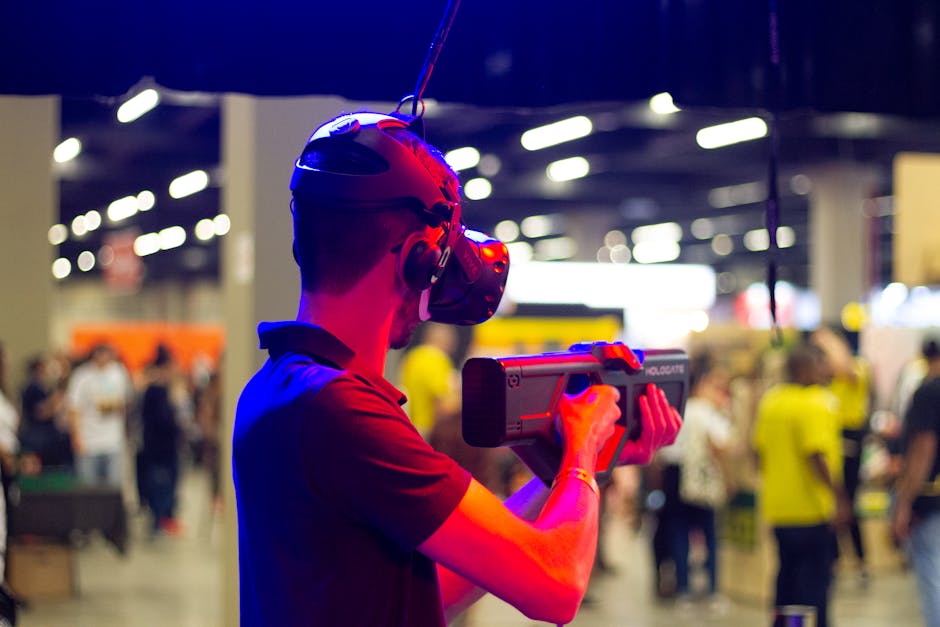Every day, we navigate a world teeming with stimuli, from the vibrant colors of a sunset to the intricate melodies of a symphony. But how do we interpret these stimuli and make sense of the world around us? This question is at the heart of our journey today. As we delve into the fascinating process of sense-making, we’ll uncover the mechanisms that allow us to find meaning in our experiences and shape our understanding of reality.
Key Takeaways
- Understanding the process of sense-making and meaning-making.
- The role of experiences and the brain in shaping our understanding.
- Applications of sense-making in learning, decision-making, and creativity.
- Emotional and psychological aspects of sense-making.
- How our brains create meaning from sounds.
- The role of communication in sense-making.
Sense-Making: How We Make Sense Of The World & Find Meaning
The innate human need for coherence
Humans are pattern-seeking creatures. We crave coherence and order, constantly striving to make sense of the world around us. This innate need for coherence drives us to interpret our experiences and find meaning in them. It’s a fundamental part of our cognitive architecture, shaping how we perceive and interact with our environment.
The role of experiences in shaping our understanding
Our experiences play a crucial role in shaping our understanding of the world. Each experience is like a piece of a puzzle, contributing to our overall picture of reality. As we accumulate more experiences, our understanding becomes more nuanced and sophisticated, allowing us to navigate the world with greater ease and confidence.

The Sense-Making Process
Cognitive steps in interpreting the world
Selecting Information
The first step in the sense-making process is selecting information. Our senses are constantly bombarded with stimuli, but we can’t pay attention to everything at once. So, we selectively focus on certain pieces of information, often those that are most relevant to our current goals or interests.
Organizing Information
Once we’ve selected information, we organize it into coherent structures. This involves categorizing information based on its similarities and differences, identifying relationships between different pieces of information, and integrating new information with our existing knowledge.
Interpreting Information
The final step is interpreting the information. This involves assigning meaning to the information, based on our past experiences, beliefs, and values. The interpretation process is highly subjective, as different people can interpret the same piece of information in different ways.
The brain’s role in filtering and organizing information
Our brain plays a crucial role in the sense-making process. It acts as a filter, sifting through the vast amount of information we encounter and selecting the most relevant pieces for further processing. The brain also organizes information, creating mental models that help us understand and predict the world around us.

Meaning-Making
Assigning significance and value to experiences
Meaning-making involves assigning significance and value to our experiences. It’s a deeper level of understanding that goes beyond mere interpretation. When we make meaning, we connect our experiences to our broader life narrative, finding purpose and significance in them.
The deeper level of understanding and its impact on perception
Meaning-making can profoundly impact our perception. When we assign significance to an experience, it becomes more salient in our minds, influencing how we perceive similar experiences in the future. This deeper level of understanding can also shape our attitudes and behaviors, guiding our actions in ways that align with our perceived meaning.

Applications of Sense-Making and Meaning-Making
Learning
Influence on knowledge acquisition
Sense-making and meaning-making are integral to the learning process. They influence how we acquire and retain knowledge, shaping our understanding of new concepts and ideas. By making sense of new information and finding meaning in it, we can integrate it into our existing knowledge base, facilitating deeper learning and comprehension.
Understanding’s role in effective education
Understanding is at the heart of effective education. By fostering sense-making and meaning-making, educators can enhance students’ comprehension and retention of material, promoting deeper learning and long-term academic success.
Decision-Making
Sense-making also plays a crucial role in decision-making. By interpreting information and assigning meaning to it, we can make informed decisions that align with our goals and values. This can enhance our problem-solving abilities, enabling us to navigate complex situations with greater ease and confidence.
Creativity
Creativity is another area where sense-making and meaning-making come into play. By interpreting and reinterpreting information in novel ways, we can generate creative ideas and solutions. This process can also foster a deeper understanding of the world, enriching our creative endeavors.

Emotional and Psychological Aspects of Sense-Making
Curiosity, Boredom, and Flow
Motivation and engagement with the world
Emotions play a key role in sense-making. Feelings like curiosity and boredom can motivate us to engage with the world, driving us to seek out new experiences and make sense of them. When we’re in a state of flow, we become fully immersed in an activity, enhancing our ability to make sense of the experience.
Finding meaning in activities
Finding meaning in our activities can enhance our emotional well-being. When we perceive an activity as meaningful, we’re more likely to enjoy it and engage with it fully. This can lead to a state of flow, where we lose track of time and become absorbed in the activity, enhancing our sense-making abilities.
How expectation influences perception
Our expectations can also influence our perception. When we expect a certain outcome, we’re more likely to perceive information that confirms our expectations, a phenomenon known as confirmation bias. This can shape our sense-making process, influencing how we interpret and make sense of information.

Key Features of Sense-Making
Essential characteristics and mechanisms
Visual and Aural Stimulation
Visual and aural stimulation are key components of sense-making. Our eyes and ears provide us with a wealth of information about the world, which we interpret and make sense of. This process is influenced by our past experiences, beliefs, and expectations, shaping our perception of reality.
Needs and Interests
Our needs and interests also play a crucial role in sense-making. They guide our attention, influencing what information we select for further processing. By aligning our sense-making activities with our needs and interests, we can enhance our understanding and find greater meaning in our experiences.
Expectations
Expectations are another key feature of sense-making. They shape our perception, influencing how we interpret and make sense of information. By managing our expectations, we can enhance our sense-making abilities, fostering a more accurate and nuanced understanding of the world.
Navigating and interpreting complex information
Sense-making involves navigating and interpreting complex information. This requires cognitive flexibility, the ability to adapt our thinking to new information and situations. By developing this skill, we can enhance our sense-making abilities, enabling us to navigate the world with greater ease and confidence.

How Our Brains Create Meaning From The Sounds Around Us
Processing auditory stimuli
Our brains are remarkably adept at processing auditory stimuli. They can detect subtle variations in pitch, volume, and timing, enabling us to interpret complex sounds like speech and music. This process is influenced by our past experiences and expectations, shaping our perception of auditory information.
Understanding auditory information
Understanding auditory information involves assigning meaning to sounds. This can be a complex process, as the same sound can have different meanings in different contexts. By interpreting sounds in light of our past experiences and current context, we can make sense of auditory information and navigate the world of sound with greater ease.
Communication in the Real World
Exchange and interpretation of information
Communication involves the exchange and interpretation of information. It’s a complex process that requires both sense-making and meaning-making. By interpreting messages in light of our past experiences, beliefs, and expectations, we can understand others’ perspectives and respond effectively.
Sense-making in social interactions
Sense-making also plays a crucial role in social interactions. It enables us to interpret others’ behaviors and intentions, fostering mutual understanding and cooperation. By enhancing our sense-making abilities, we can improve our social skills and build stronger relationships.

In conclusion, sense-making and meaning-making are fundamental to our understanding of the world. They enable us to interpret our experiences, find meaning in them, and navigate the world with greater ease and confidence. By understanding these processes, we can enhance our learning, decision-making, and creativity, fostering a richer and more nuanced understanding of reality.
For more insights on finding meaning and purpose in life, check out our articles on finding meaning and purpose and steps to find meaning and purpose. If you’re interested in learning more about how our brains process information, you might enjoy our articles on practicing mindfulness and cognitive restructuring.
Sources:
– How expectation influences perception
– Perception process
– How our brains create meaning from sounds
Unraveling the Mysteries: A Curious Mind’s FAQ on Interpreting the World
How do humans generally interpret the world around them?
Humans interpret the world through a combination of sensory experiences, cognitive processes, and cultural conditioning. Our senses provide raw data about our surroundings, which our brain processes and filters based on past experiences, knowledge, and societal norms. This complex interplay allows us to understand and navigate our environment, though it also means our perceptions are subjective and can vary widely from person to person.
What role do emotions play in our interpretation of the world?
Emotions significantly influence how we perceive and interpret the world. They can alter our focus, making us more attuned to information that aligns with our current emotional state. For instance, when we’re happy, we’re more likely to notice positive events, and when we’re sad, we might be more attuned to the negative. Emotions also color our memories, impacting how we recall events and therefore how we interpret similar future events.
Can our understanding of the world change over time?
Absolutely. Our interpretation of the world is not static; it evolves as we accumulate new experiences, knowledge, and perspectives. This learning process can lead to shifts in our beliefs, attitudes, and behaviors. Exposure to diverse cultures, ideas, and information can significantly broaden our understanding and alter how we perceive the world around us.
How does language influence our perception of the world?
Language shapes our reality in profound ways. It not only allows us to communicate but also influences how we categorize and conceptualize the world. Different languages can frame concepts in unique ways, affecting speakers’ perceptions. For example, the way time is described in language can influence how individuals perceive the passage of time. Thus, language plays a crucial role in shaping our worldview.
Is it possible to fully understand another person’s view of the world?
While it’s challenging to fully comprehend someone else’s perspective, empathy and effective communication can bridge the gap significantly. Listening actively and open-mindedly to others’ experiences and viewpoints can expand our understanding and appreciation of diverse perspectives. However, it’s important to acknowledge that each person’s unique combination of experiences, culture, and personality shapes their view of the world, making it a deeply personal phenomenon.
How do biases affect our interpretation of the world?
Biases can significantly distort our perception and interpretation of the world. They are often unconscious and can lead us to make assumptions, jump to conclusions, or ignore evidence that contradicts our pre-existing beliefs. Biases can stem from personal experiences, cultural norms, or societal stereotypes. Recognizing and challenging our biases is crucial for a more accurate and open-minded understanding of the world.
What is the role of curiosity in understanding the world?
Curiosity is a fundamental driver of learning and discovery. It motivates us to explore, ask questions, and seek out new experiences and information. This innate desire to understand can lead to a deeper and more nuanced comprehension of the world around us. Encouraging curiosity not only expands our knowledge but also fosters empathy and appreciation for diversity.
How do cultural differences impact our interpretation of the world?
Culture profoundly influences our worldview, affecting our values, beliefs, and behaviors. It shapes how we interpret events, communicate, and interact with others. Cultural differences can lead to varied interpretations of the same situation, highlighting the subjective nature of our perceptions. Understanding and respecting cultural diversity is essential for effective communication and fostering a more inclusive global community.



